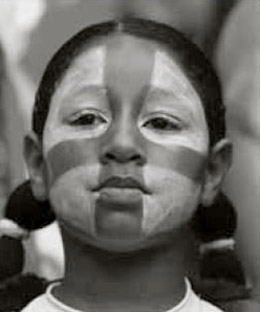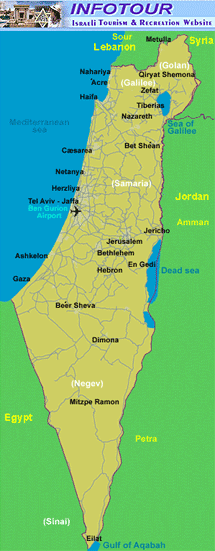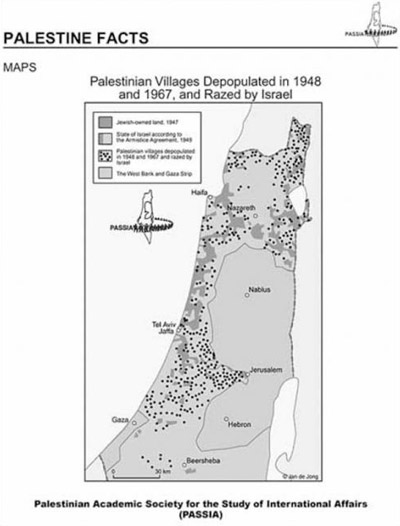Main Body
4 What is a ‘nation’?
Guibernau (1996, p. 47) has defined the nation as: ‘a human group conscious of forming a community, sharing a common culture, attached to a clearly demarcated territory, having a common past and a common project for the future and claiming the right to rule itself’. So awareness, territory, history and culture, language and religion all matter. However, it is rare in the real world to find a case of a nation with a clear-cut and homogenous character in terms of this list of possibilities. Each nation is unique in the (alleged) makeup of its special character and worth. One crucial question is whether – and to what extent – a group must be aware of its alleged distinctiveness from other groups, in order to be classed as a nation. One could argue that a nation can objectively be defined as a group of people which possesses a shared and distinct, historically persistent cultural identity, and which makes up a majority within a given territorial area. If that is the case, then one could argue that even if such a ‘nation’ is not pushing for a right to self-determination (in any form), it nevertheless is a nation.
There are other would-be objective approaches to what might signify nation-ness, including statehood, ethnicity and naturalness.
- Statehood. This view holds that if a group has its ‘own’ state then it constitutes a nation. The common term ‘nation-state’ taps into this sense of nation. But this approach seems a little too neat, and begs many questions. For a start, it would mean that there can be no non-state nations, freezing into place the existing configuration of states that makes up the political map of the world. Defining nation-ness in terms of statehood, although common, rather rigs the game – why should all non-state ‘nations’ have their aspirations dismissed purely by definition?
- Ethnicity. Some interpret the principle of national self-determination as meaning that each ‘ethnic’ group forms a nation, and that each nation should be presumed to have a right to political self-determination. But who is to locate – and worse, to police – where the boundaries of one ethnicity stop and those of another begin?
- Naturalness. Mountains and rivers, for example, are sometimes thought to provide ‘natural’ borders. But, just as much as they divide and separate peoples, mountains and rivers and other features of the natural landscape can bring people together and create common interests and a common sense of community. There is no single or correct way to ‘read’ the social meaning of natural landscapes.

We can see that the problem with so-called objective approaches to defining a nation is finding sound criteria by which one might judge which groups form nations and which do not. How can we weigh different histories, traditions, religions, languages? Any attempt at objective demarcation of national communities is sure to remain contested, not least from among the groups who are thus classified.
This is why most theorists and observers adopt a subjective approach to defining nation-ness. From a subjective point of view, history, religion and language, for example, still count, but awareness and acceptance of a claim that X is a nation among the people of the supposed national group – a real consciousness that this is a group and I am part of it – is the crucial ingredient. This raises an important further question: does the awareness constitute the group, or the other way around? Certainly, a sense of nation and national belonging can be induced and engendered, ‘created’ if you like. Films, paintings, speeches and activities can invoke national heroes and national myths, which in turn can induce a sense of commonality and belonging. It normally serves the interests of those doing the inducing to say that they are merely reflecting what is already there, mirroring people’s pre-existing and deep-rooted feelings of attachment. All of this is routine and familiar, on one level. All governments regulate, to some degree, citizen education, language, culture, sport, travel and so on, and by so doing they establish and reinforce some ‘national’ attributes and discourage others. But extreme, simplistic and coercive peddling of dubious ‘national’ myths for cynical power purposes is common enough also. Hitler’s Nazism and Mussolini’s Fascism were primary twentieth-century examples, but there are many others. As we shall see further below, nationalism has a dark side. It involves inevitable shoehorning of a people under a simplified set of cultural or other characteristics. The degree of this shoehorning and the way it is carried out are important.
From a subjective point of view, to quote Margaret Moore,
the term ‘nation’ refers to a group of people who identify themselves as belonging to a particular nation group, who are usually ensconced on a particular historical territory, and who have a sense of affinity to people sharing that territory. It is not necessary to specify which traits define a group seeking self-determination.
(Moore, 1997, p. 906)
Moore goes on to say, echoing our discussion above, that
One advantage of conceiving of national identities in subjective terms, and jurisdictional units in terms of the area on which the national group resides, is that it avoids the problem of contested definitions of what really constitutes a nation.
(Moore, 1997, p. 907)
We are able to sidestep all such awkward definitional issues and come down to the view that ‘Ultimately, communities are nations when a significant percentage of their members think they are nations’ (Norman, 1991, p.53). One consequence of this view is that imagination and symbolism become essential for defining a nation in the mind of its (potential) members. Before turning to the issue of nationalism as a political ideology, I want to say something brief on this critical point.
I propose the following definition of the nation: it is an imagined political community. … It is imagined because the members of even the smallest nation will never know most of their fellow-members, meet them, or even hear of them, yet in the minds of each lives the image of their communion.
(Anderson, 1983, pp. 5–6)
When it comes to defining a particular nation, potent mixes of historical fact and myth are common: ‘“to forget and – I will venture to say – to get one’s history wrong are essential factors in the making of a nation” [Renan] and “Nationalism requires too much belief in what is patently not so” [Hobsbawm]’ (quoted in Archard, 1995, p. 472). Beliefs do not need to be true for people to hold to them and act as if they were true; ‘A group of individuals united in and by the false belief that they share a common history might act collectively and thereby initiate a common history’ (Archard, 1995, p. 475).
There is plenty of scope for the making of representations, in the form, for example, of constructing and presenting national myths which can be fuel for imagining communities in Anderson’s sense. Anderson took the view that ‘communities are to be distinguished, not by their falsity/genuineness, but by the style in which they are imagined’ (Archard, 1995, p. 481). Clearly, not any old claim to nationhood could ‘stick’ – ‘the nation-constituting beliefs must bear some kind of possible relationship to the group of people who are constituted as a nation’ (Archard, 1995, p. 474) – but would-be nation builders would have plenty of scope to discourage some narratives of nation and to encourage others.
One might argue that a nation not only imagines itself, others imagine it too, and offer constructions or representations of it as a friend or as an enemy. These ‘imaginings’ matter. Consider, for example, the Israel/Palestine issue. Some Palestinians portray Israel as a tool of Western imperial power in the Middle East, and Israelis protest at such images. On the other hand, consider the argument of the Palestinian critic Edward Said:
What we must again see is the issue involving representation, an issue always lurking near the question of Palestine … . Zionism always undertakes to speak for Palestine and the Palestinians; this has always meant a blocking operation, by which the Palestinian cannot be heard from (or represent himself) directly on the world stage. Just as the expert Orientalist believed that only he could speak (paternally as it were) for the natives and primitive societies that he had studied – his presence denoting their absence – so too the Zionists spoke to the world on behalf of the Palestinians.
(Said, 1979, p. 5)
Maps, too, have proven to be a vital part of ‘imagining’ a nation, in quite a literal sense, creating a visual ‘image’ of a nation as a state. Maps establish, indeed they create, centres and peripheries, locations and borders, and even the very existence of a political unit. Nation-builders know this fact all too well. For example, in the words of Weizman:
From 1967 to the present day, Israeli technocrats, ideologues and generals have been drawing maps of the West Bank. Map-making became a national obsession. Whatever the nature of Palestinian spatiality, it was subordinated to Israeli cartography. Whatever was un-named ceased to exist. Scores of scattered buildings and small villages disappeared from the map, and were never connected to basic services.
(Weizman, 2002)

There is a large version of the Israeli Tourism map [PDF].

View a larger version of Palestine villages Depopulated in 1948 and 1947.
When one looks more closely at the sheer diversity of those entities that we call ‘nations’ and ‘states’, the strong view expressed by anthropologist Clifford Geertz becomes understandable: ‘The illusion of a world paved from end to end with repeating units that is produced by the pictorial conventions of our political atlases, polygon cut-outs in a fitted jigsaw, is just that – an illusion’ (Geertz, 2000, p. 229). Geertz does not deny the material existence of different political systems and the material reality created by the policing of national borders, for example. But he does want us to question whether these separate splashes of colour in atlases really add up to any strong commonalities between the separated political units.
Finally, it is worth pointing out a quite different, provocative perspective that emerges once the symbolic aspects of nation are accepted, as part of a subjective approach to the definition of nations. One could argue that a nation is not something that ‘is’, but rather it is something that ‘does’. What does it mean, what effect is intended or achieved, by calling a group of people a ‘nation’ (as opposed to a community of some other sort)? Instead of thinking of ‘culture’ or ‘descent’, for example, as fixed things, we can ask how different definitions of the nation work or what they accomplish (Verdery, 1996). A nation is a system for classifying people, as are class, gender and so on. We often take these classifications to be ‘natural’ – ‘nation’ and ‘natural’ possess a common etymological root in the sense of ‘to be born’ – but they can equally be seen as constructed. Classifications are vital to establishing political centres and peripheries on the ground; they are constructions that do real work, and upon which people act. Notice also how seeing ‘nation’ as a symbol and a construct makes it a dynamic concept. After all, if ‘nation’ is a label, it can in principle be peeled off one jar and put onto another. There has been talk of the ‘Arab nation’, for example, over the years, a term used to symbolise a commonality of interest and outlook among Arab peoples regardless of which nation they belong to in the sense of ‘nation-state’. A very different example of the dynamism of this label would be the more recent use of the term in the phrase ‘queer nation’, invoking a sense of commonality among gay communities regardless of what country they are citizens of. This dynamism is clearly one part of what it means for a political idea to be ‘living’.
Summary
- There are two main approaches to the definition of nation, the objective approach and the subjective approach.
- The subjective approach is generally favoured by theorists.
- Symbolic and imagined aspects of nationality are important.
- ‘Nation’ as a word and a label is still evolving, and being applied in new contexts.

